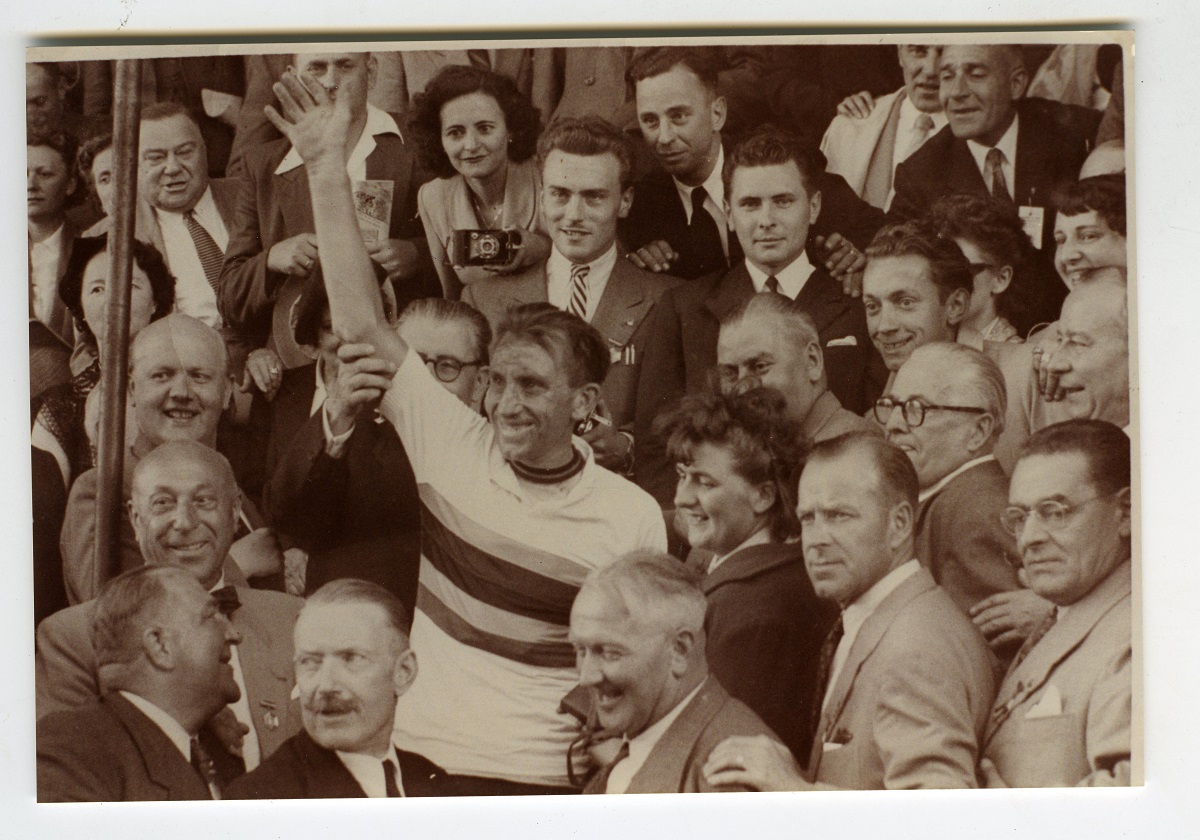
World Championship Cycling in Moorslede, 1950: the archetypical Flandrien strikes again
A man made of iron, wrapped in a rainbow jersey. The 1950 World Cycling Championships in Moorslede ended splendidly for the home crowd. Briek Schotte, the archetypical Flandrien, was crowned world champion for the second time, after a grueling race on a magnificent course.
How to define a Flandrien? It’s no easy feat to put it in words, but we’ll give it a try. A Flandrien is a rock-hard cyclist (m/v/x), someone who elevates willpower and determination to a way of life. Someone who displays a seemingly ultimate resistance to effort and pain. Someone who will always be remembered conquering cobbled climbs in rain and wind, between the weeping willows. In short: someone like Alberic ‘Briek’ Schotte (1919-2004).
This humble man, typified by his crooked posture on the bike, is the archetype of the Flandrien. Throughout his career, he won two world titles, two editions of the Ronde van Vlaanderen and was runner-up in the Tour de France. August 20th in 1950 was the backdrop of one of his greatest achievements.
That day, the world cycling championships took place in Moorslede, a small town in the province of West Flanders. A grueling 284-kilometre race would decide who would take home the rainbow jersey. The peloton, consisting of 40 riders, had to conquer a challenging course that first headed for Flanders Fields. A region that was changed forever, only some 30 years prior, when World War 1 shook Europe to its core. The world championships took the riders past war cemeteries, commemorative monuments and a handful of Flanders’ typical steep (cobbled) climbs such as the Rodeberg and the (in)famous Kemmelberg.
The race became a battle of attrition like no other. One after the other, the riders threw in the towel. But not Iron Briek. Near the end of the race, he dropped his companions in the lead and went solo towards the finish line. In Moorslede, about 30 kilometres from his home village Kanegem, he was the first of only a dozen riders to finish this monstrous race. The rainbow jersey was his again, for the second time around.
The 1950 World Championships will always be a part of cycling history. A tale that you can relive today. Download the gpx-file for the reconstruction of the original course here. And if you’re sweating, cursing and suffering: think of Briek.

